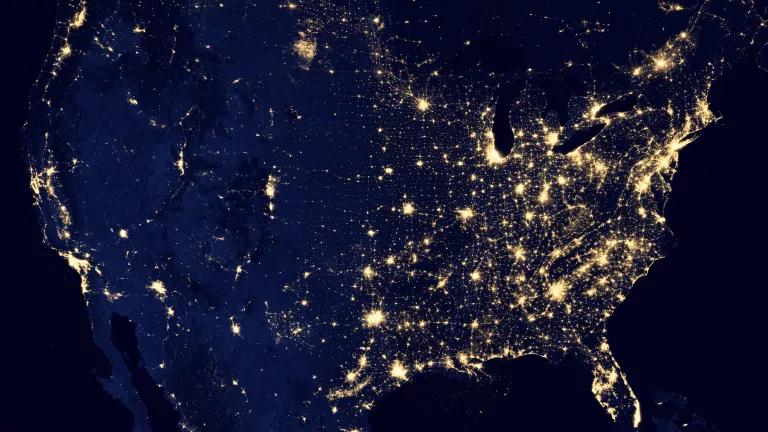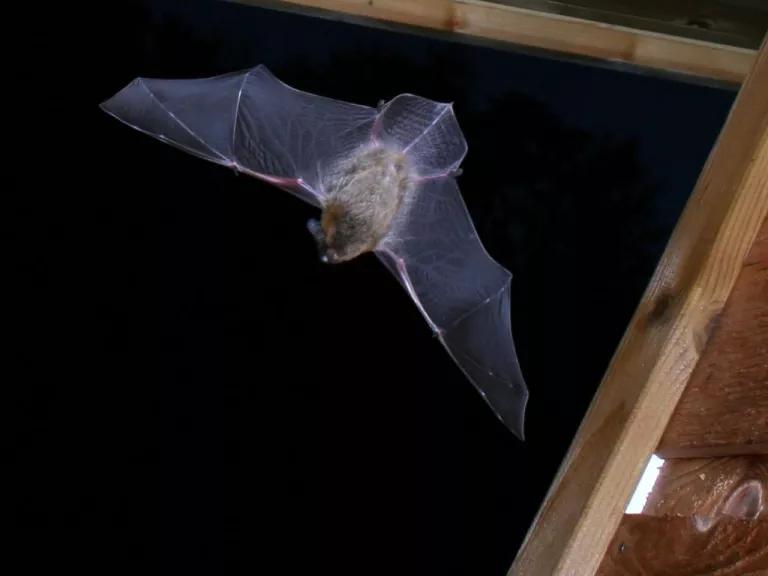The Dark at the End of the Tunnel
Our nightlights do more than keep the bogeyman away—they affect the movement of bats.

In the concrete jungle, light is everywhere. From the Technicolor vomit of Times Square to the buzzing streetlamps of the outer boroughs, our cities bleed photons. But these millions of artificial suns do more than keep the night at bay—they affect the wildlife that also call cities home.
For bats, urban light is a mixed bag. On the one hand, lights mesmerize insects and cause them to congregate in dense clouds where bats can swoop through and mow them down like Bluto Blutarsky in a cafeteria line.
But bats are nocturnal, which means their nightly emergence is timed to coincide with the sun’s sayonara. Studies have shown that artificial lighting can mess up that timing and decrease bat activity in some places.
According to a study published in the March issue of Global Change Biology, the very presence of bright lights can prevent the movement of bats between roosts and their hunting areas. We see an illuminated parking lot or streets—to bats it might as well be a solid wall.
Bats can travel for miles between where they eat and where they sleep, says coauthor Jon Sadler, a professor of biogeography at the University of Birmingham in the United Kingdom. “If we put obstructions in the way, nesting, overnighting, and even overwintering sites can be disrupted.”

Sadler’s study focused on gaps between suitable habitat for the common pipistrelle. In the urban areas of Birmingham, where the research was conducted, these gaps could take the form of housing that separates two stands of trees, or a cross street that breaks up a long row of street trees.
Animals are naturally resistant to crossing gaps between habitats, Sadler says. The bigger the gap, the less likely they are to risk exposing themselves to predation by crossing it. That’s true for many creatures, be they bats, birds, golden lion tamarins, and even humans.
We knew all of that already. “What we didn’t know," says Sadler, “was what happens if you stick a light in that gap. Does the resistance to movement become higher or lower?”
It turns out that a little artificial luminescence goes a long way. By creating a model of bat activity all over Birmingham and combining it with luminosity data from a satellite, the researchers were able to predict how bats would react to varying levels of light.
Basically, adding light to any gap makes it more formidable to a bat. The bigger the gap, the less light it takes to discourage the flying mammals from trying to cross. In a large enough gap between trees, even dim lights can create a barrier effect.
So what’s the big deal if a few bats can’t cross the road? Can’t they just fly somewhere else?
The problem is that these effects can accumulate over great areas. Think about all the dusk-to-dawn lights, streetlamps, motion detectors, billboards, and other kinds of artificial lighting lining each city block. Consider how far these bat barriers extend into the suburbs. What was once a limitless habitat of night sky has been carved up and cordoned off because our electricity addiction has insomnia.
It’s not clear what effects this habitat fragmentation may have on the bats or how the animals might be to cope with it, but Sadler says that it was telling that light influenced the common pipistrelle. This bat is “the [U.K.’s] most common, generalist, urban-loving bat,” he says. “So you can imagine if you get bats with more strict habitat requirements, then the impact could be much greater.”
Simply turning off all the lights wouldn’t magically make cities bat-friendly. Even if that were an option, most downtown areas are already dead zones because there’s no good habitat (trees, for instance). Instead, the researchers suggest more nuanced solutions—like smart lampposts.
“You can turn them off at different times, you can brighten them, you can darken them,” says Sadler. “We need to be much more subtle in how we light our landscapes.”
And it’s not like a few pipsqueak pipistrelles are the only ones who could benefit from a night-light revolution. Cutting back on nighttime lights could mean fewer carbon emissions, more savings for cities, and even more stars to see.
This article was originally published on onEarth, which is no longer in publication. onEarth was founded in 1979 as the Amicus Journal, an independent magazine of thought and opinion on the environment. All opinions expressed are those of the authors and do not necessarily reflect the policies or positions of NRDC. This article is available for online republication by news media outlets or nonprofits under these conditions: The writer(s) must be credited with a byline; you must note prominently that the article was originally published by NRDC.org and link to the original; the article cannot be edited (beyond simple things such grammar); you can’t resell the article in any form or grant republishing rights to other outlets; you can’t republish our material wholesale or automatically—you need to select articles individually; you can’t republish the photos or graphics on our site without specific permission; you should drop us a note to let us know when you’ve used one of our articles.

Protecting Biodiversity Means Saving the Bogs (and Peatlands, Swamps, Marshes, Fens…)
How to Make an Effective Public Comment
From Dams to DAPL, the Army Corps’ Culture of Disdain for Indigenous Communities Must End